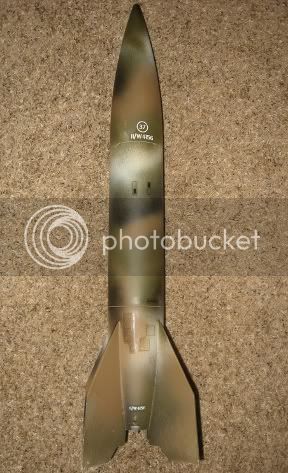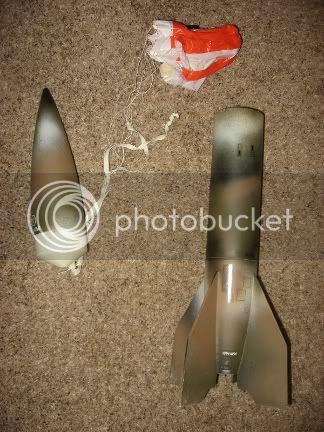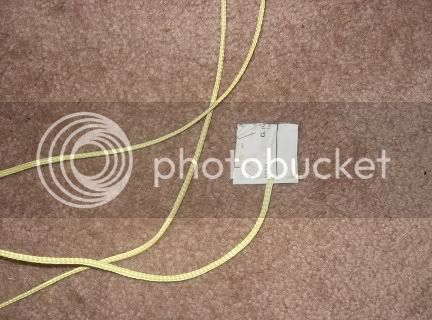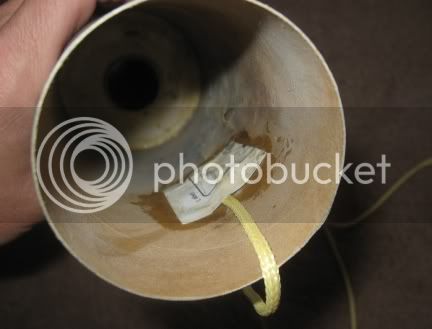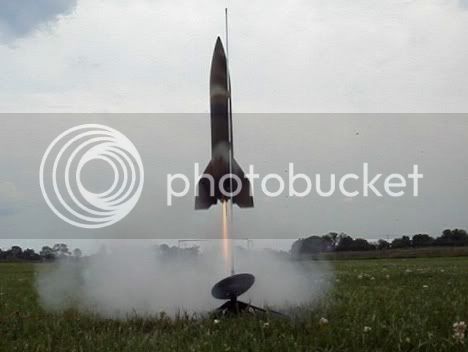All...
This past weekend (after visiting my parents on Mother's Day), I found my old Estes V2 that I built around 12 years ago. It's in pretty good shape and I'd love to fly it again, however one of the fins was cracked (fixed that) and I immediately noticed a shock cord problem.
I think the thing had been sitting so long that the cord got old / brittle and snapped off in my hands. If I'm not mistaken, that cord was tied to/through the engine mount way down in the tube.
What can I do to repair this after I locate some more shock cord? I'm assuming the normal type of glue-on body tube attachment wouldn't be sufficient for this one. Any ideas or advice?
I'll see if I can post some pics later of the beast...
This past weekend (after visiting my parents on Mother's Day), I found my old Estes V2 that I built around 12 years ago. It's in pretty good shape and I'd love to fly it again, however one of the fins was cracked (fixed that) and I immediately noticed a shock cord problem.
I think the thing had been sitting so long that the cord got old / brittle and snapped off in my hands. If I'm not mistaken, that cord was tied to/through the engine mount way down in the tube.
What can I do to repair this after I locate some more shock cord? I'm assuming the normal type of glue-on body tube attachment wouldn't be sufficient for this one. Any ideas or advice?
I'll see if I can post some pics later of the beast...





